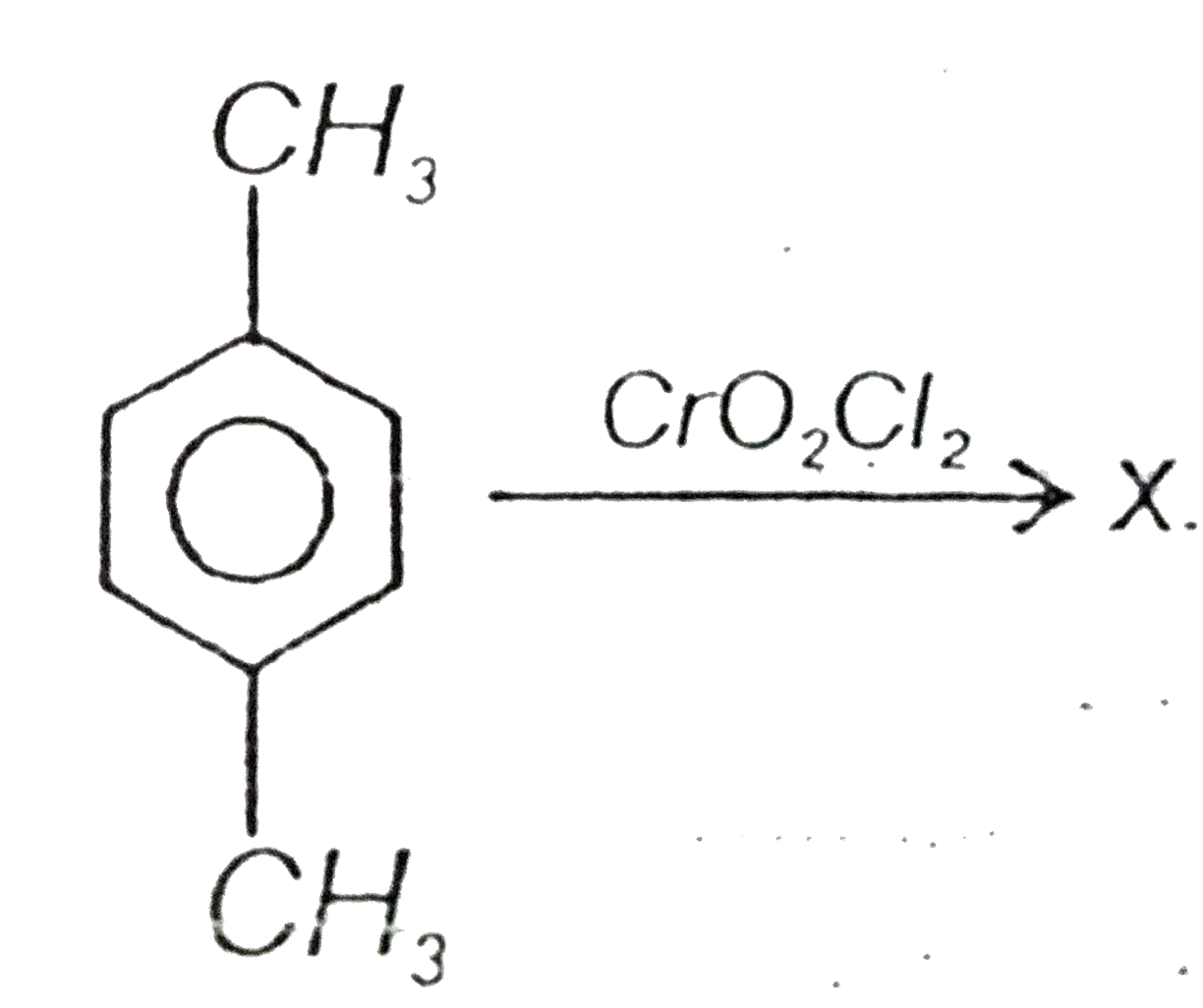In the reaction sequence
CH3−O∣∣C−H−HCN−−−→.ΘOH(A)H2O/⊕H−−−−→Δ Product is/are :
Diasteromers
Racemic mixture of hydroxy acid
Product is racemic mixture of cyanohydrin
Products is optically inactive
The correct Answer is:B
To solve the given question, we will follow the reaction sequence step by step.
Step 1: Identify the Reactants
The reactant given is acetaldehyde (CH₃CHO) and it is reacted with HCN in a basic medium.
Step 2: Understand the Reaction Type
The reaction between acetaldehyde and HCN is an example of a nucleophilic addition reaction. In this reaction, the nucleophile (CN⁻) attacks the electrophilic carbon of the carbonyl group.
Step 3: Mechanism of the Reaction
1. The carbonyl carbon (C=O) is electrophilic due to the partial positive charge on it. The nucleophile (CN⁻) attacks this carbon.
2. The oxygen atom of the carbonyl group becomes negatively charged as a result of the nucleophilic attack.
3. The intermediate formed is a cyanohydrin, which has the structure:
C(OH)(CH₃)(CN)
This is referred to as product A.
Step 4: Hydrolysis of Cyanohydrin
The cyanohydrin undergoes hydrolysis when treated with water (H₂O) and heat. The hydrolysis reaction can be represented as follows:
1. The cyanohydrin reacts with water, leading to the formation of a hydroxy acid.
2. The product formed after hydrolysis is lactic acid (C₃H₆O₃), which can be represented as:
CH₃CHOHCOOH
Step 5: Determine the Optical Activity
Lactic acid exists in two forms: L-lactic acid and D-lactic acid, which are enantiomers (non-superimposable mirror images). Since both forms are produced in equal amounts during the reaction, the final product is a racemic mixture.
Conclusion
The final product of the reaction sequence is a racemic mixture of lactic acid.
Answer
The correct answer is: A racemic mixture of lactic acid.
---
The reactant given is acetaldehyde (CH₃CHO) and it is reacted with HCN in a basic medium.
The reaction between acetaldehyde and HCN is an example of a nucleophilic addition reaction. In this reaction, the nucleophile (CN⁻) attacks the electrophilic carbon of the carbonyl group.
1. The carbonyl carbon (C=O) is electrophilic due to the partial positive charge on it. The nucleophile (CN⁻) attacks this carbon.
2. The oxygen atom of the carbonyl group becomes negatively charged as a result of the nucleophilic attack.
3. The intermediate formed is a cyanohydrin, which has the structure:
C(OH)(CH₃)(CN)
This is referred to as product A.
The cyanohydrin undergoes hydrolysis when treated with water (H₂O) and heat. The hydrolysis reaction can be represented as follows:
1. The cyanohydrin reacts with water, leading to the formation of a hydroxy acid.
2. The product formed after hydrolysis is lactic acid (C₃H₆O₃), which can be represented as:
CH₃CHOHCOOH
Lactic acid exists in two forms: L-lactic acid and D-lactic acid, which are enantiomers (non-superimposable mirror images). Since both forms are produced in equal amounts during the reaction, the final product is a racemic mixture.
The final product of the reaction sequence is a racemic mixture of lactic acid.
The correct answer is: A racemic mixture of lactic acid.
Topper's Solved these Questions
- BOOK - RESONANCE ENGLISHCHAPTER - CARBONYL COMPOUNDS (ALDEHYDES & KETONES ) & CARBOXYLIC ACID EXERCISE - PART- IV13videos
CARBONYL COMPOUNDS (ALDEHYDES & KETONES ) & CARBOXYLIC ACID
- BOOK - RESONANCE ENGLISHCHAPTER - CARBONYL COMPOUNDS (ALDEHYDES & KETONES ) & CARBOXYLIC ACID EXERCISE - Exercise-31videos
CARBONYL COMPOUNDS (ALDEHYDES & KETONES ) & CARBOXYLIC ACID
- BOOK - RESONANCE ENGLISHCHAPTER - CARBONYL COMPOUNDS (ALDEHYDES & KETONES ) & CARBOXYLIC ACID EXERCISE - Exercise-2 Part-I1videos
CARBONYL COMPOUNDS (ALDEHYDES & KETONES ) & CARBOXYLIC ACID
- BOOK - RESONANCE ENGLISHCHAPTER - BIOMOLECULES & POLYMEREXERCISE - ORGANIC CHEMISTRY(Biomolecules & Polymer)34videos
BIOMOLECULES & POLYMER
- BOOK - RESONANCE ENGLISHCHAPTER - CHEMICAL KINETICSEXERCISE - PHYSICAL CHEMITRY (CHEMICAL KNIETICS & RADIOACTIVITY)49videos
CHEMICAL KINETICS
Similar Questions
Knowledge Check
- Question 1 - Select One
CH_(3)-underset(Br)underset(|)(CH)-CH_(2)-overset(O)overset(||)(C)-CH_(3)underset(Delta)overset(N_(2)H_O(4),overset(ϴ)(O)H)(to) Product:
A B
B C
C D
D
- Question 2 - Select One or More
In the given reaction:
Ph−C∣∣O−CH3H2N−OH−−−−−−−−→H⊕(X)PCl5−−−−−→Δ(Y) Y will beAPh−C∣∣O−NH−CH3BH3C−O∣∣C−NH−PhCPh−CH2−O∣∣C−NH2DPh−CH2−CN - Question 3 - Select One
H3C−O∣∣C−CH2−CH2−CH2−CH2−⊕PPh3Bϴu⊕Li−−−−−→Δ(X), Major product (X) is:
A B
B C
C D
D
Complete the following reaction sequence :
CH3−O∣∣C−CH3(i)CH3MgBr−−−−−−−−→(ii)H2O(A)Na metal−−−−→ether(B)CH3−Br−−−−−→(C)View SolutionComplete the following reactions:
(i) CH3−CH3∣C∣Cl−CH2CH3alcKOH−−−−→ΔAO3−−−−−→Zn/H2O(B+C)
(ii) CH3ICH−CH3alcKCN−−−−→A(i)SnCl2/HCl−−−−−−−−−−−−→(ii)H2O.OH.H2O2B
(iii) HCNHCl/AlCl3−−−−−−→A(i)C6H6Δ−−−−−−−−−−→(ii)(H2O)/H−B
(iv) View Solution
View SolutionObserve the following reaction CH3−C∣∣O−CH2−C∣∣O−CH3HCN(excess)−−−−−−−→H3⊕O/Δ−−−−→ products . The correct statements is
View SolutionPh−CH2−O∣∣C−OH(1)NaOH,CaO,Δ−−−−−−−−−−−−−−→(2)H⊕(A)
Product (A) is :View SolutionIn the reaction sequence
C6H5−C∣∣O−CH3NH2OH/H⊕−−−−−−−−→[X]PCl5−−→[Y], will beView Solution

